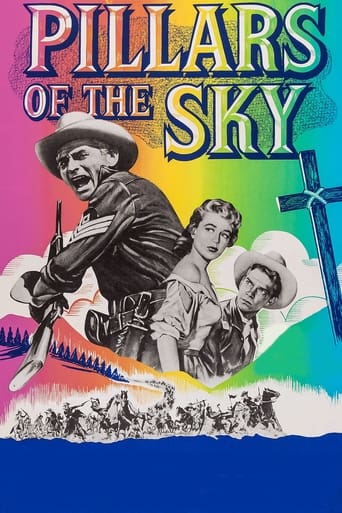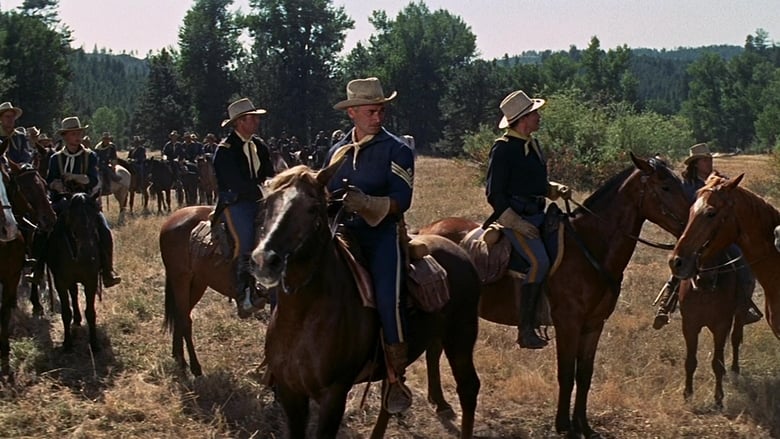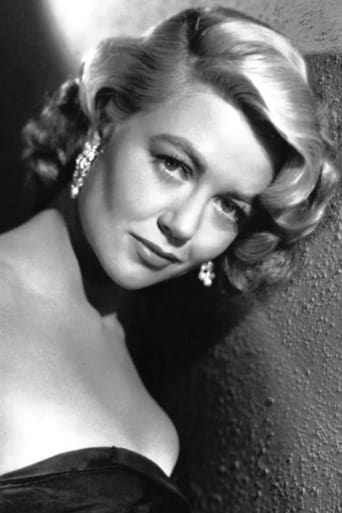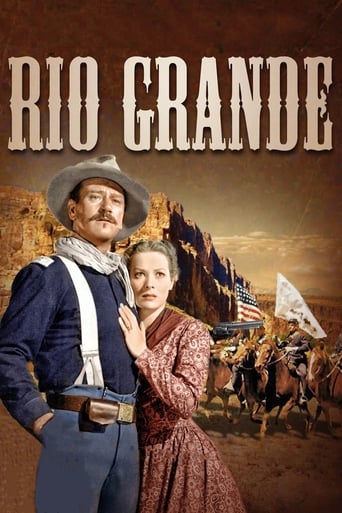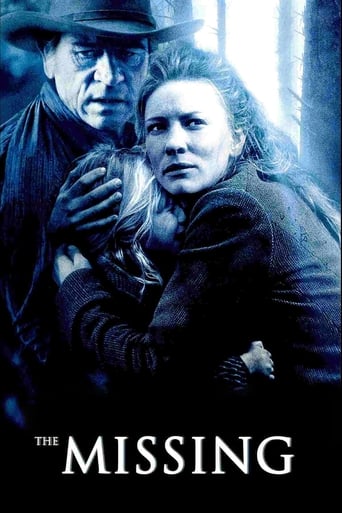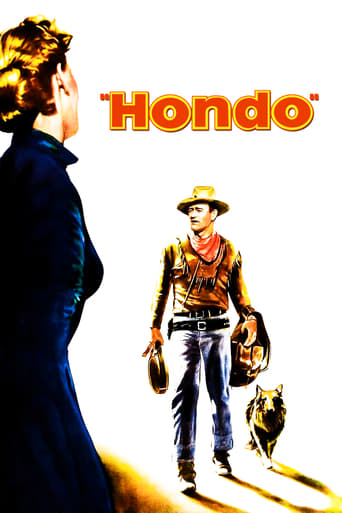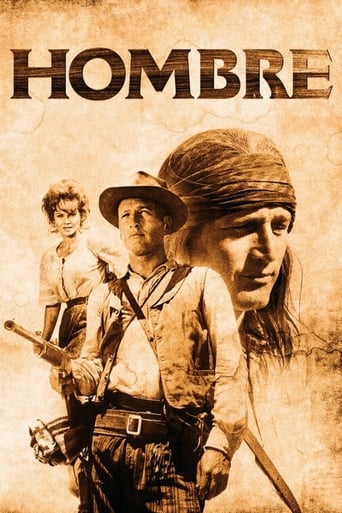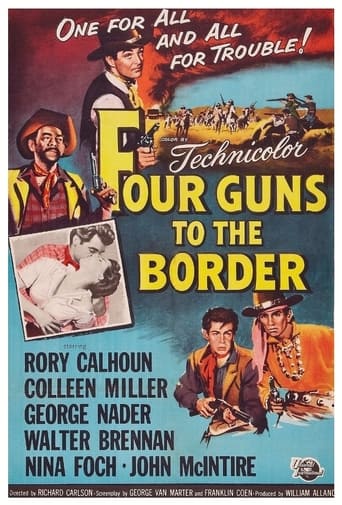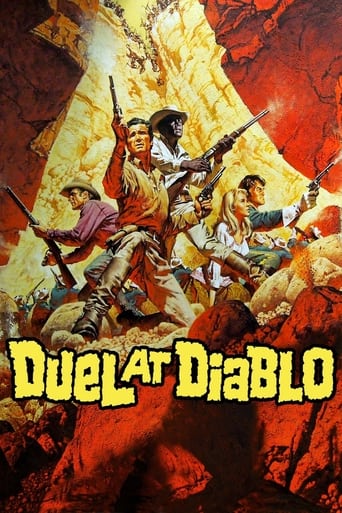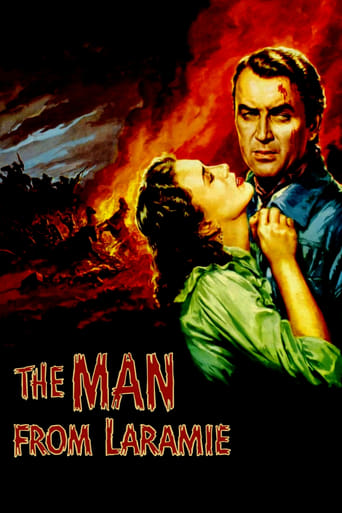Pillars of the Sky (1956)
First Sergeant Emmett Bell faces off with Apache chieftain Kamiakin in this nuanced portrayal of racial tensions between Native Americans and white settlers in 1860s Oregon Country.
Watch Trailer
Free Trial Channels
Cast


Similar titles
Reviews
Too much of everything
Intense, gripping, stylish and poignant
Tells a fascinating and unsettling true story, and does so well, without pretending to have all the answers.
The movie runs out of plot and jokes well before the end of a two-hour running time, long for a light comedy.
This is the story of Sgt. Emmet Bell (Jeff Chandler) who found his weakness in the arms of another man's woman (Dorothy Malone) and his strength in the power of another man's God . In Oregon Country , 1868 , numerous tribes of Native Americans with Biblic and Evangelist names have been placed on a reservation north of the Snake River . Here a priest called Holden (War Bond) , has constructed a church , and many of the tribes have accepted Christianity and Christian names such as Samuel , Aaron , Abraham , Jacob ; in fact , the three Indian chiefs hold Christian names : Elias , Isaias and Zacarias . But the White Men are building a bridge that across the river to Indian territory to areas north . When the cavalry, under the command of Col. Stedlow (Willis Bouchey) and Capt. Tom Gaxton (Keith Andes) arrive they intend to make peace but the tribal chiefs feel their treaty has been violated . As the cavalry column advances into the reservation , Kamiakin (Michael Ansara) carries out razzias against the US Cavalry and settlements . A-Universal-International-Picture gets Western action , shootouts , a triangular love story , breathtaking Indian raids on Yankees regiments and results to be quite entertaining . This moving movie is an epic portrait of the thrilling story about several tribal chiefs decide to unite their forces against the trespassing whites who open a road across the reservation and are building a bridge crossing their lands . It's a medium budget film with good actors , technicians , production values and pleasing results . At the ending , when takes place the Indian assault , possesses all the sweep , grandeur and noisy action of the greatest Westerns of an age long past . The picture contains spectacular charges of Indian riders , including an overwhelming final when the US soldiers are besieged at a church turned into a strongly defended fort . Nice acting from a great cast . As Jeff Chandler is good as a honorable and Cristian Sergeant who is in charge of maintaining order and attempts to keep the peace between US cavalry and Indians . Chandler gives stature to the role , providing sincerity and bravura . Chandler was famous , until his early death , for playing Indian chief Cochise , a dignified portrait well shown in : ¨Broken arrow¨ , ¨Battle of Apache Pass¨ and ¨Taza , son of Cochise¨ . Although Chandler also played all kinds of genres , such as : ¨Return to Peyton Place¨(drama) , ¨Flame of Araby¨ (adventure) , ¨Merrill's marauders¨ (wartime , in his last film) , until his early death at 42-year-old . Dorothy Malone as gorgeous and pleasant wife , proves to be a great actress , as usual . And support cast is frankly excellent , such as : Ward Bond , Keith Andes , Lee Marvin , Sydney Chaplin, Olive Carey and special mention for the veteran Willis Bouchey as well as Michael Ansara as violent Indian chief vowing to lead the tribes in battle against the encroaching white men . This exciting and stirring Western was beautifully photographed in Cinemascope , print in Technicolor by Harold Lipstein , Universal's ordinary cameraman. And an original and shining score from William Lava and Heinz Roemheld , though uncredited .This motion picture was professionally directed by George Marshall in colorful style , though has a few flaws . He realized a great number of films , especially Westerns . His first Western was ¨Wild Gold¨(1934) and he subsequently directed ¨Destry rides again¨ with James Stewart and Marlene Dietrich in which years later he would make a remake titled ¨Frenchie¨ with Audie Murphy and Marie Blanchard . As George Marshal introduces hilarious elements and amusement in his Westerns , such as ¨Texas¨ , ¨Fancy pants¨, ¨Advance to the rear¨, and also directs Musical Westerns as ¨Red Garters¨ and ¨The second greatest sex¨ . Being particularly known for his co-direction of the epic Western ¨How the west was won¨ along with Henry Hathaway and John Ford .
Directed by veteran George Marshall, this generally excellent western was partially based on the novel "Frontier Fury", by the noted writer of Western novels: Will Henry, in turn, largely based on a historic battle, given various names, between a confederacy of various tribes of Eastern Oregon and Washington and a US army unit, commanded by Colonel Steptoe(Stedlow in the film). This was seen as a defeat by the greatly outnumbered army unit, although hardly the semi-massacre suggested in the film. The official stats suggest only abut 10% of the soldiers were killed or wounded, which about equals the rough estimate for the Indians. The prominent characters played by Ward Bond(Holden) and Jeff Chandler(Sgt. Bell)are fictional, as relates to the main battle. However, Bond's missionary pastor/doctor clearly is mostly based on Marcus Whitman, who was long before invited by the Indians to establish a mission near present Walla Walla. He was murdered, as part of a general massacre and abduction of Europeans, after the Indians noticed that his European patients were much more likely to survive a measles outbreak than his Indian patients. This incident, which occurred a decade before the 1858 battle featured in the film, is represented by the Indian attack on the mission complex, in which Bond(Holden) is shot dead by the chief of the hostile Indians: Kamiakin. Thus, the film blends these two chronologically disconnected historical themes into a single story. Why was this story characterized as happening in 1868 instead of the actual '58? to justify the advanced firearms used? Although the outspoken chief Kamiakin dies in the film, in fact, like Chief Crazy Horse, this long important belligerent never died in battle. He was well played by Michael Ansara, who makes several impressive speeches in councils.I only wish that the film had spent some time dramatizing the remarkable escape of the army group, being surrounded by a much larger number of Indians, much like Custer. It only alludes to such in a discussion of plans, then suddenly we are back at the mission. The film very well dramatizes their difficult flight to relocate on a chunk of ancient earth crust elevated 1000 feet above the rolling Palouse Hills, while being pursued by Indians. However, after 10 hours of fighting, their ammunition and water was about exhausted. If the Indians had known this, they could have pretty well finished them off with a concerted night attack. instead, as discussed in the film, an army scout located a weak spot in the Indian's siege, revealed by a campfire count. Thus, a nocturnal escape attempt through this area was decided upon, with rain as an additional obscuring factor. Amazingly, it worked, and they marched an incredible 90 miles in 24 hours to safety, while the Indians concentrated on gathering the equipment they left behind, once their escape was discovered. As in the film, the main Indian allies of the Europeans were the Nez Perce, who greeted the retreating army. The army and Nez Perce would, in time, become adversaries, as dramatized in "I Will Fight No More".The outdoor scenes were filmed mostly in the NE corner of Oregon, rather close to where the historical action took place. Incidentally, 'Pillars of the Sky' refers to the mountain ranges in this region, we presumably getting an occasional look at the Wallowa range. At this time(1858), the Indians were being besieged by gold prospectors and homesteaders, as suggested in the film. Chandler(Bell) begins with very adversarial relationships with the elderly Stedlow(Willis Bouchey) and his subordinate officer captain Gaxton. These relationships morphed into mostly mutual respects during and after the big battle. Gaxton and Bell were at odds over Caxton's estranged wife Calla(Dorothy Malone), who shows up as a survivor of an Indian attack on a wagon. This fickle woman claims she never loved Gaxton and has long loved the hard-drinking Bell. Then, during and after the big battle, she changes her mind, admitting that it was mostly her fault that she and Gaston didn't get along well in the past.Several reviewers complain that the big action scene comes too late to maintain interest in the film to that point. However, in reality, battles were very often preceded by attempts to settle issues by negotiations, which is what the first 45 min of the film is mostly about, along with working out the differences between various army officers. When I think of other Westerns of this era, many had only one big battle, and it occurred late in the film. Thus, I don't see this film as being out of line in that respect. Besides, this was quite a lengthy battle scene, the real battle lasting 10 hours, until darkness. Thus, the reported casualties were actually remarkably few, with this consideration. It was pointed out at this web site that the Indians actually rode bareback or on blankets, in contrast to most westerns, where a saddle was often hidden under a blanket.I don't have any major complaints about the many players, except perhaps Dorothy. Instead of playing an actual Indian chief, as he did in several other films, Chandler plays an army officer quite sympathetic to the plight of the Indians, rather like John Wayne's character in "Fort Apache", for example. I thought he was quite adequate for his role, as was Bouchey as Stedlow. Ward Bond has one of his best roles. I also liked him in "Wagon Masters". There were actually too many characters for me to keep them all straight. Presently available at YouTube, as well as an expensive DVD. Amazingly, I rated this higher than "The Searchers" I'll stick with that.
This fine western is a cavalry-Indian affair that has the usual treaty-breaking by the government as it builds a road and fort on Indian land that causes an uproar and leads to war. The military's action sets in motion cavalry-Indian hostilities and the tribes gather for an attack on the fort. Many of the Indians have been baptised and converted to Christianity by a white missionary and live in peace with the soldiers, many serving as scouts under a sergeant played by Jeff Chandler. Complicating matters are two white women the Indians hold as hostages who are at great risk should war break out. Chandler did some his best work in westerns and is the lieutenant whom the Indian soldiers respect and follow faithfully. Chandler's flirtation with a married woman, played by Dorothy Malone, doesn't have much to do with the story other than to give the leading man a romantic interest. Ward Bond, Michael Ansara and Keith Andes are good in supporting roles. Oregon's scenic beauty is on display in this CinemaScope film.
Given the basically no-star cast and the fact that it came from Universal-International, it's understandable that you might think this would be just another run-of-the-mill "B" oater--and you'd be dead wrong. This first-rate western has several things going for it. The breathtaking Oregon locations have been beautifully captured by Harold Lipstein's expert Technicolor cinematography. The colors are lush, and the photography is so atmospheric you can almost feel the chill in your bones as the troops slog through the rugged mountain country. There are several rousingly staged and exciting action scenes, notably a somewhat lengthy sequence in which a wagon train loaded with troops cuts its way through a mass of charging Indians. The performances by a cast of veteran character actors--Lee Marvin in an early role (although his Irish brogue is a bit much), Keith Andes, Charles Horvath, Alberto Morin and Willis Bouchey, among others--are top-notch, Dorothy Malone is beautiful, Jeff Chandler gives a more authoritative (and animated) performance than he usually did and Ward Bond does an outstanding job as a caring and concerned missionary who doesn't want to see bloodshed on either side. The main thing the film has going for it, though, is the subject matter. Rather than having the usual Apaches or Comanches rampaging through the Southwest, the film is set in the Oregon mountain country, and the Indians are not superstitious savages but have been converted to Christianity by missionary Bond, and many in their religious zeal have given up their "animal" names and taken the names of Biblical figures (to further drive the point home, one soldier complains to Bond that, since he has "Christianized" the Indians, they have no qualms about attacking at night; "uncivilized" Indians never attacked at night for fear that if they were killed, their spirits would roam in the dark forever and never find peace). As far as I know, this particular facet of the Indian wars had never been tackled before or, for that matter, since. The story consistently holds your interest (although the triangle between Chandler, Malone and Andes tends to slow things down somewhat), the action scenes are terrific, the photography, as noted, is superb. A very worthy effort from veteran director George Marshall. Well worth your time.

